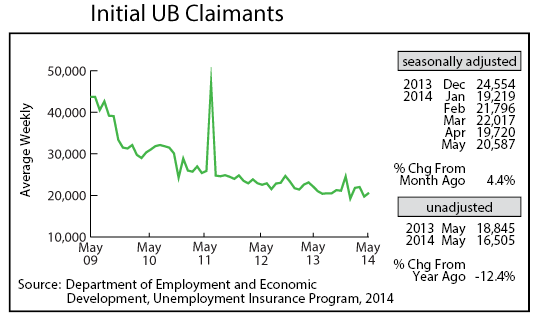by Dave Senf
June 2014
Note: All data except for Minnesota's PMI have been seasonally adjusted. See the feature article in the Minnesota Employment Review, May 2010, for more information on the Minnesota Index.
The Minnesota Index increased 0.1 percent for the third month in a row in May. The slowdown over the last few months implies that Minnesota's rate of economic growth has slipped in 2014. The index hasn't increased this slowly over a three-month period since the first few months of 2010. The U.S. index showed no signs of slowing, advancing 0.3 percent for the fourth straight month in May. However, the U.S. index's solid increase since February is inconsistent with the 2.9 percent annual rate decline in GDP during the first quarter of 2014.
Minnesota's real GDP increased 2.8 percent in 2013, significantly outpacing the 1.9 percent national increase. Private sector GDP growth was even stronger last year, climbing 3.1 percent compared to the U.S. private sector GDP gain of 2.3 percent. Minnesota's real GDP expansion last year ranked 13th highest among the states. Minnesota's real GDP as measured by the Minnesota index is up only 0.8 percent through the first five months of 2014, significantly below the 1.3 percent increase in the U.S. index. Expect an upward revision in the Minnesota Index and a downward revision in the U.S. Index in future data revisions.
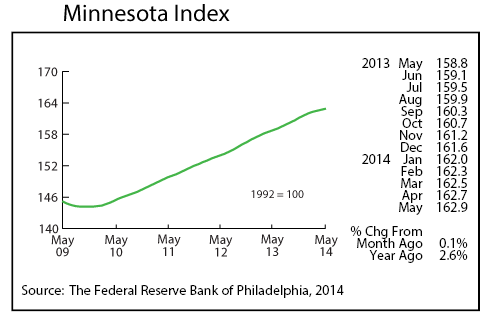
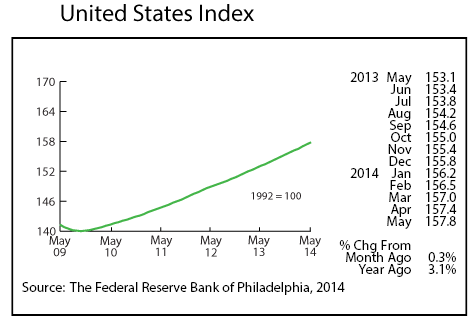
After four months of subpar job growth, May's 10,300 job increase in adjusted Wage and Salary Employment was welcome news. Private sector employment increased 11,600 while public sector jobs dropped 1,300. The private sector job gain was the largest in two years. The biggest story in May was the 6,700 increase in goods-producing jobs. Construction added 3,800 workers; Manufacturing increased payrolls by 2,900. The jump in construction jobs was the third largest on record. Manufacturing has added jobs in seven of the last eight months. Professional and Business Services was the big job expander, adding 4,100 jobs. The only private sector to report significant job cutbacks was Leisure and Hospitality.
Minnesota job growth over the year ticked up a notch to 1.6 percent but continued to lag U.S. job growth which increased to 1.8 percent in May. Minnesota employment grew at the same rate, 1.7 percent, as the U.S. on an annual average basis last year. Over-the-year job growth in the state has averaged 1.6 percent through the first five months this year compared to the U.S. average of 1.7 percent.
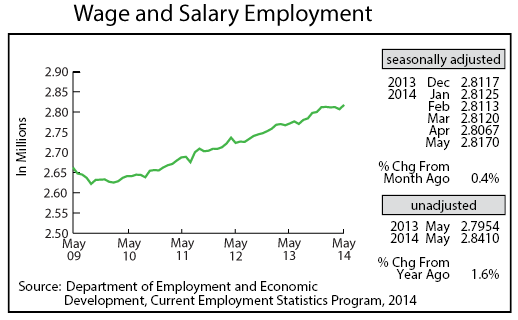
After plunging sharply over the previous two months, Minnesota's adjusted online Help-Wanted Ads climbed sharply in May, jumping to 120,600. Online job advertising increased 16.1 percent in Minnesota while slipping 0.4 percent nationally.
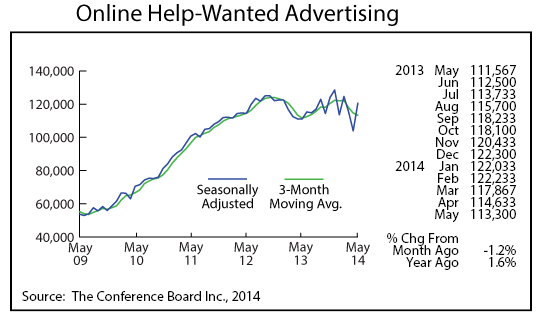
Minnesota's Purchasing Managers' Index (PMI) jumped to its highest reading in more than three years, climbing to 67.3. The strong reading indicates that Minnesota manufacturing activity is expanding at its fastest rate since 2011. The recent uptick in manufacturing hiring should continue at least through the summer. Minnesota's PMI continues to come in far ahead of both the Mid-America and U.S. indices.
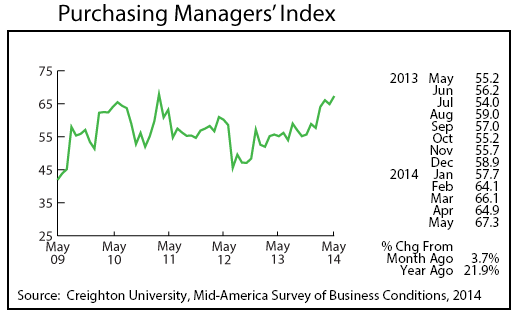
Another indicator of robust manufacturing activity in Minnesota is the 42.0 adjusted Manufacturing Hours recorded in May. The factory workweek has only been 42 hours or longer five times since 1970. Expect more manufacturing hiring over the next few months.
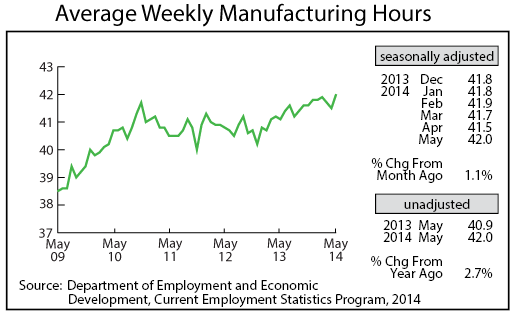
Manufacturing Earnings rose with a longer workweek, climbing to $829.06. Manufacturing earnings in real terms and unadjusted for seasonality were up 2.0 percent from a year ago.
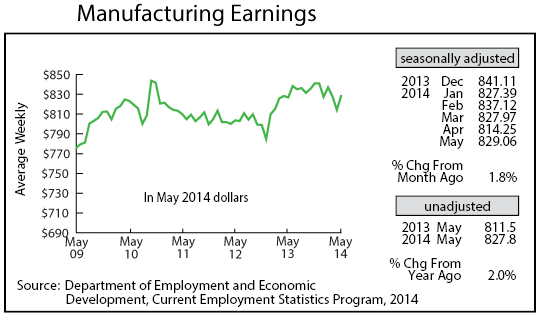
The Minnesota Leading Index moved sideways in May to 1.05 from 1.04 in April. The 1.05 reading implies that the Minnesota economy will expand by only 1 percent over the next six months. This indicator has shown similar periods of slower economic growth that was later revised away as the underlying data was revised upward. Most of the other indicators point toward Minnesota's economic growth accelerating during the next six months.
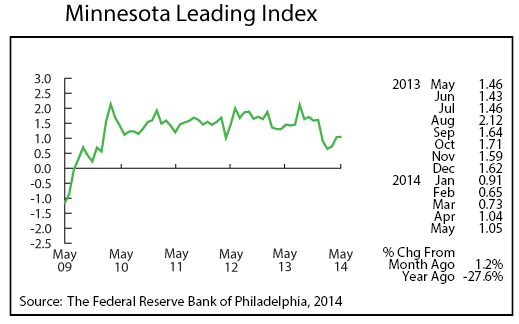
Adjusted Residential Building Permits stormed back in May, spiking to 1,673. Home-building activity in the state had been disappointing until May. May's permit total was the highest in almost a year and a half. The strong uptick in home-building helped jump-start construction job growth.
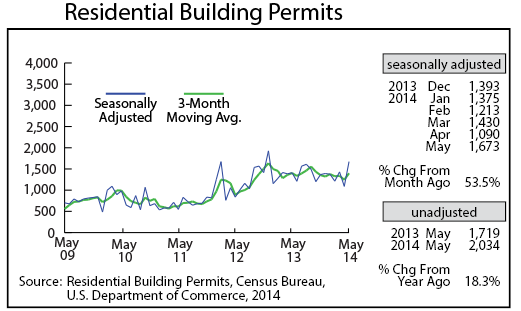
Adjusted Initial Claims for Unemployment Benefits (UB) rose slightly in May but remain subdued. Monthly initial claim levels around 20,000 imply that layoffs are low which should translate into moderate job growth through the rest of the year. Several key indicators are signaling that the state's job growth will catch up with the national pace during the second half of the year.
